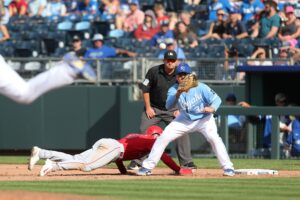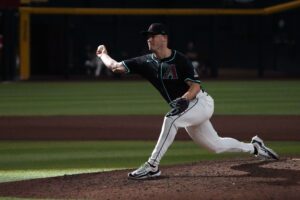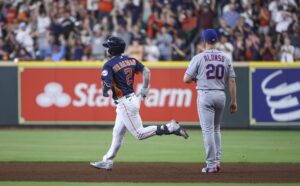Two Simple Steps to Speed Up Baseball
Baseball needs to speed up, the fans say. There’s a general consensus that the game these days is too slow. Most baseball purists would argue that they’d rather see a 2-1 pitchers duel instead of a 17-11 marathon. However, fans crave more action, more runs, more power. So, all of the advantages that have been made in recent years have been geared toward ramping up the offense: smaller stadiums, juiced balls, pitch clocks. What if instead though, MLB took a step back in time to see how to speed up the game?
Raising The Mound
In 1968, Bob Gibson of the St. Louis Cardinals started 34 games completing 28 of them. After 13 shutouts, 268 strikeouts and a microscopic 1.12 ERA, MLB lowered the mound the following year from 15 inches to 10 inches. It wasn’t as if guys couldn’t hit. Pete Rose hit .335 that year. Frank Howard hit 44 home runs and drove in 106. Also, the average game time was two hours and twenty-nine minutes. Compare that to 2019’s average game time of three hours and five minutes. So, by simply raising the mound, the game could potentially be sped up by thirty minutes. Since the strike of 1994 and the beginning of the ”steroid era”, the average game time is two hours and fifty-three minutes. This one change would not only make the game faster, but it would also force the hitters to become better in the box as the advantage would be back in the pitchers’ hands.
Speaking of the hitters.
Calling The Strike Zone
One would assume that, if the mound were higher in 1968, there must have been more strikeouts. In fact, there was an average of six strikeouts per game in 1968 as opposed to an average of almost nine strikeouts per game in 2019. Let’s take a look at the hitting comparisons between the 1968 and 2019 seasons:
1968: 19,143 Strikeouts. 9,156 Base-On-Balls. .237 Batting Average. .299 OBP.
2019: 42,823 Strikeouts. 15,895 Base-On-Balls. .252.Batting Average. .323 OBP.
Now, there were only 20 teams in 1968 compared to 30 in 2019. But, the average strikeouts were nine per nine innings in 2019. In 1968, that average was six strikeouts per nine innings. Even taking out the ten worst strikeout offending teams in 2019, the average is still eight and a half strikeouts per game. That’s two and a half strikeouts more than in 1968 the supposed ”year of the pitcher.” If the hitters are supposedly better, stronger and more patient in the box, why are the strikeout numbers up and not down?
More Inside The Numbers: Swing Batter Swing!
In 1950, MLB updated the official rule on the strike zone. It states :
“The Strike Zone is that space over home plate which is between the batter’s armpits and the top of his knees when he assumes his natural stance.”
Simply based on the eye test, this is a rule that is very loosely enforced and varies widely across the league; hence, the use of ”robots” being tested this upcoming season. If the strike zone were to be called properly, it would force players to swing at more pitches. Seeing fewer pitches would not equate to weaker numbers either. Tim Anderson, the 2019 league leader in batting average at .335, saw an average of 3.41 pitches per plate appearance. Pete Alonso, the league leader in home runs with 53, saw an average of 3.99 pitches per plate appearance.
On the flip side of those stats, Eugenio Suarez led the league in strikeouts with 189 and saw an average of 4.12 pitches per plate appearance. Rougned Odor had the lowest batting average of all qualified hitters at .205. He saw an average of 4.04 pitches per plate appearance.
The point is: good hitters will hit good pitching. The number of pitches seen has no correlation to success. By forcing batters to swing, the more the baseball would be put in to play, thereby increasing the action on the field. Raise the mound, call the strike zone as the rule states and we all will enjoy a faster-paced, more exciting game.






